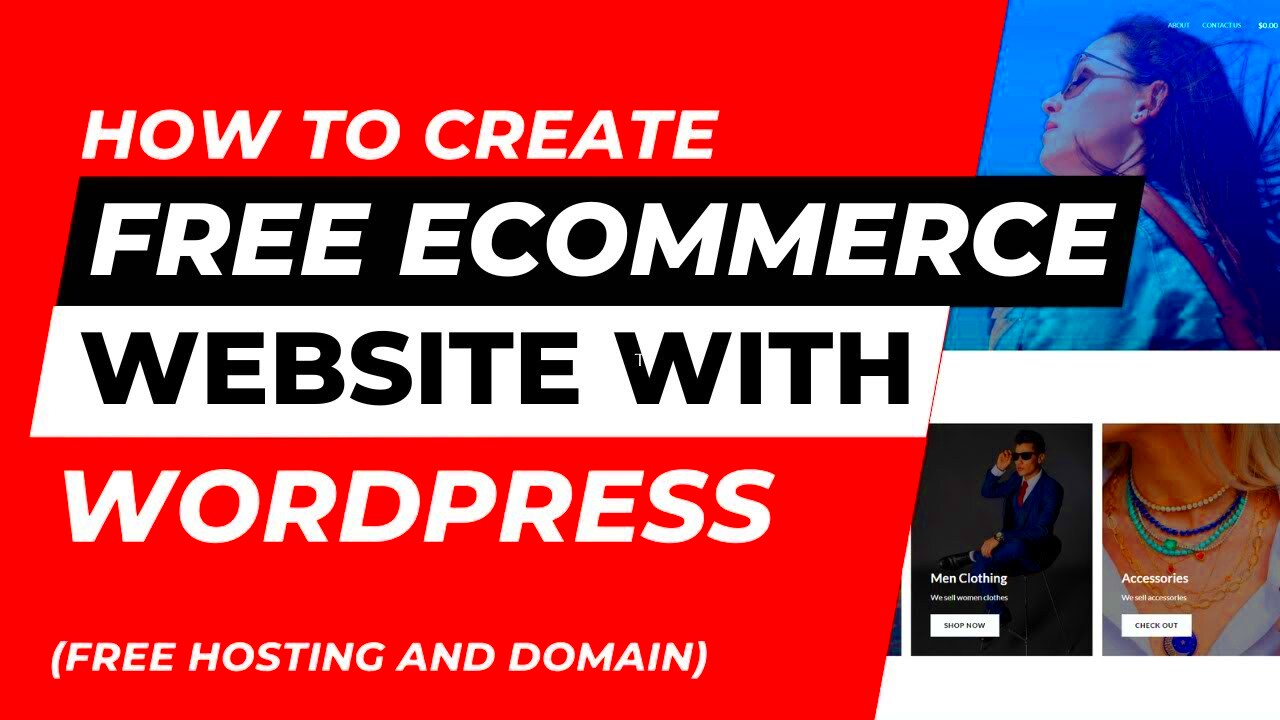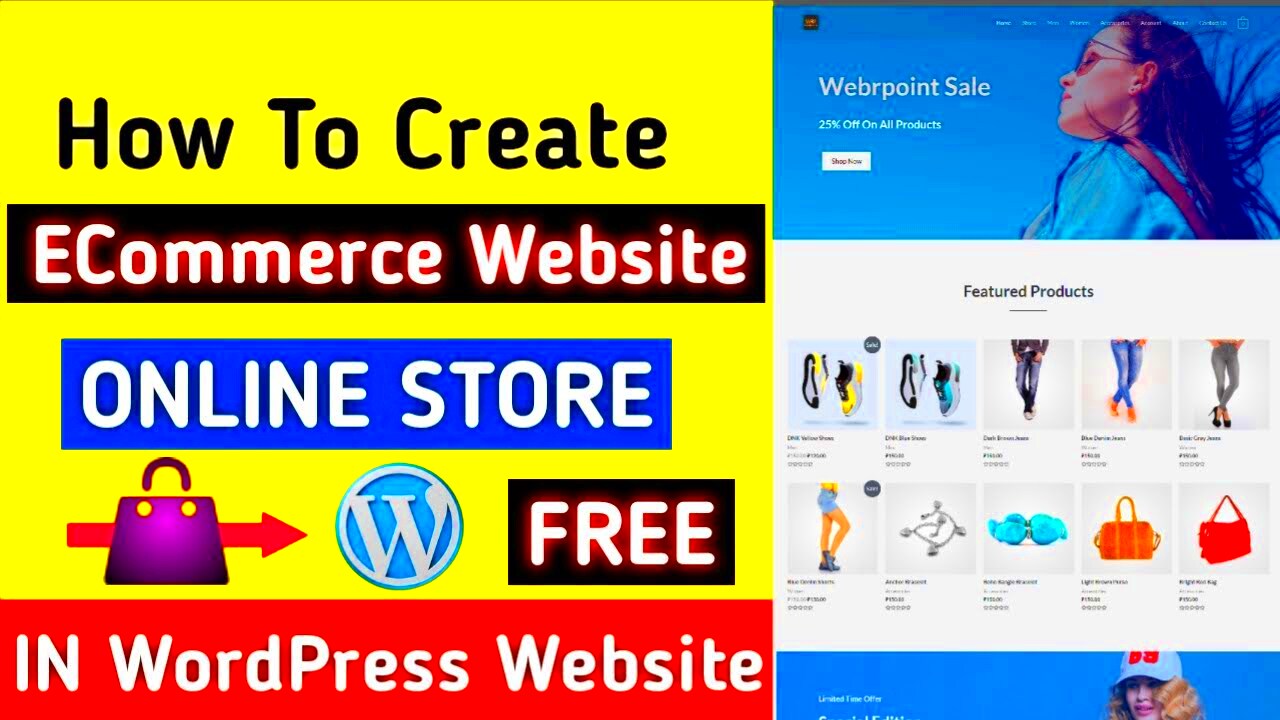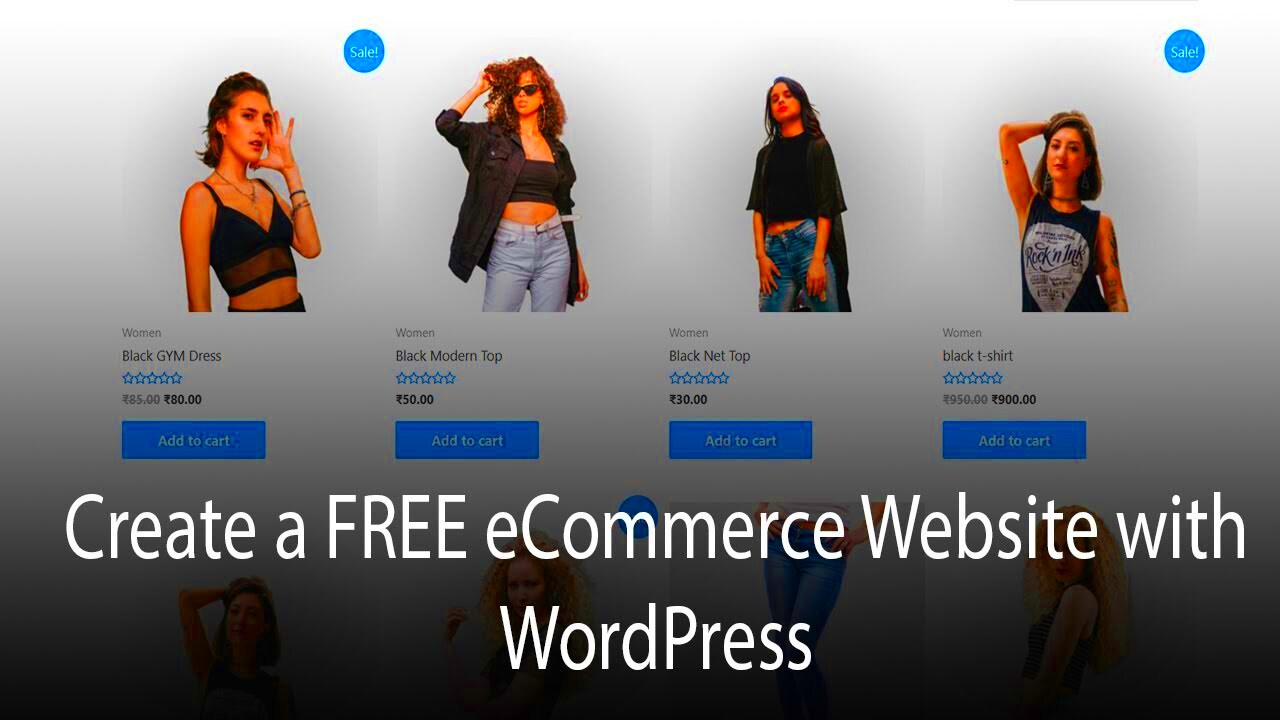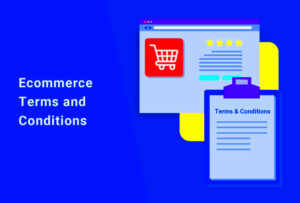Jumping into the world of ecommerce can feel a bit overwhelming, especially if you’re just starting out. But did you know that you can set up an online store without spending a dime? Free ecommerce websites are a fantastic way to dive into the online marketplace without the financial burden. Whether you’re a hobbyist looking to sell handmade crafts or a budding entrepreneur with big dreams, these platforms give you the tools to start your ecommerce journey with minimal investment. Let’s explore what these platforms have to offer!
Benefits of Using Free Ecommerce Platforms

When it comes to setting up an online store, opting for a free ecommerce platform has several advantages that make it an attractive choice for newcomers. Here’s what you can expect:
- Cost-Effective: The most obvious perk is that it’s free! You can save your hard-earned money for marketing, inventory, or other business essentials.
- User-Friendly: Most free ecommerce platforms are designed with beginners in mind. You don’t need to be a tech wizard to get started. Easy-to-use interfaces help you create your store quickly.
- Templates and Customization: Many platforms offer a range of templates, allowing you to build a professional-looking store without design skills. Personalize it to reflect your brand!
- Built-In Features: Most free platforms come with essential ecommerce features like shopping carts, payment gateways, and inventory management—all without additional costs.
- Community Support: Many of these platforms have vibrant user communities where you can seek help, share experiences, and learn from others.
In a nutshell, starting your ecommerce venture doesn’t need to be a financial drain. With free ecommerce platforms, you can launch your online store quickly, easily, and without costing you a cent. Embrace this opportunity and let your entrepreneurial spirit thrive!
Choosing the Right Free Ecommerce Website for Your Needs

When it comes to diving into the world of ecommerce, one of the first steps is choosing the right platform that suits your unique needs. With numerous free ecommerce website options available, it can feel a bit overwhelming. But no worries, let’s break it down!
Here are some key factors to consider:
- Ease of Use: Look for a platform that is user-friendly, even if you don’t have any technical skills. Intuitive interfaces can make your setup and management far less stressful.
- Customization Options: Depending on your brand, you might want a platform that allows for a significant amount of design and customization options. Ensure that you can modify templates to reflect your brand’s identity.
- Payment Solutions: Select a platform that offers a variety of payment gateways. Check for support for popular methods like credit cards, PayPal, and even cryptocurrencies.
- Product Limitations: Some free platforms place limitations on the number of products you can sell. Make sure to choose one that can accommodate your current inventory and growth plans.
- SEO Capabilities: Look for built-in SEO tools to help you optimize your website for search engines. This is crucial for increasing visibility and driving traffic to your store.
- Support and Resources: Good customer support can save you considerable time and stress. Look for platforms with robust support options, including tutorials, forums, and chat assistance.
Taking the time to evaluate these features will lead you to the platform that best aligns with your ecommerce aspirations!
Step-by-Step Guide to Setting Up Your Free Ecommerce Website
Alright, you’ve chosen your free ecommerce platform—great job! Now, let’s move on to setting it up to start selling your products. Follow this easy step-by-step guide, and you’ll be online in no time!
- Sign Up: Visit the website of your chosen platform and create an account. You usually just need an email address and a password, and you’re good to go!
- Pick a Template: Browse through the platform’s library of templates. Choose one that aligns with your brand. Most platforms allow you to preview how it’ll look before finalizing your choice.
- Add Your Products: Start populating your online store by adding products. Ensure to include high-quality images, detailed descriptions, pricing, and inventory details. The more information you provide, the better!
- Set Up Payment Methods: Configure payment options by linking your bank account or setting up third-party payment systems. Follow the platform’s instructions to ensure transactions can be processed smoothly.
- Configure Shipping Options: If you’ll be shipping products, set your shipping methods, rates, and policies. Make sure to consider different regions if you plan to sell internationally.
- Optimize Settings: Go through SEO settings and ensure your website is optimized with relevant keywords. Fill out your meta titles, descriptions, and alt text for images to help boost visibility on search engines.
- Launch Your Store: Once everything looks good, it’s time to hit that publish button! Announce your launch on social media and to your network to generate some buzz.
Congratulations! You’ve taken the important first steps in your ecommerce journey. As you continue to grow, don’t forget to analyze your sales data and customer feedback to make ongoing improvements!
Designing Your Online Store: Tips and Best Practices
When it comes to setting up your eCommerce website, design is key. It’s your shop window, and first impressions matter! A well-designed online store not only attracts customers but also helps build trust. So, let’s dive into some essential tips and best practices to ensure your store shines!
1. Choose a User-Friendly Layout: Opt for a clean and easy-to-navigate layout. Organize your products into categories, making it simple for visitors to find what they’re looking for. A cluttered website can overwhelm potential buyers, so stick with simplicity.
2. Use High-Quality Images: Invest in professional photography or high-quality images of your products. Ensure that these images are zoomable so customers can see the details up close. Consider using lifestyle images, too—show your products being used in real life!
3. Incorporate Your Brand’s Identity: Use colors, fonts, and logos that reflect your brand’s identity. Consistency is crucial; a cohesive look helps build brand recognition and trust.
4. Optimize for Mobile: With a significant number of shoppers using mobile devices, design your site to be mobile-responsive. Test it out on different devices to ensure everything looks and functions perfectly.
5. Utilize Clear Calls-to-Action (CTAs): Encourage visitors to take action with clear and appealing CTAs like “Buy Now,” “Add to Cart,” or “Sign Up Today.” Make these buttons stand out with contrasting colors and prominent placement.
Your eCommerce site should be an inviting space where customers feel comfortable to browse and buy. By implementing these tips, you’ll create a visually stunning and functional online store that invites customers back time and again!
Adding Products and Managing Inventory
Now that your online store looks fantastic, it’s time to fill it with products! Adding products and managing inventory effectively is crucial for smooth operations and customer satisfaction. Let’s go over some best practices to help you navigate this process seamlessly.
1. Product Descriptions Matter: When adding products, comprehensive and engaging descriptions can make a difference. Highlight key features, benefits, and usage to inform customers. Here’s what to include:
- Title: Clear and informative.
- Features: List key details (size, color, material).
- Benefits: Explain how the product meets the customer’s needs.
- SEO Keywords: Use relevant keywords to boost visibility in search engines.
2. Set Competitive Pricing: Research your competitors and set prices that attract customers while still making a profit. Consider offering promotions or discounts for new customers or during special occasions.
3. Implement Inventory Management Tools: To avoid overselling or stockouts, consider using inventory management software. This helps track stock levels, sales, and supplier information, ensuring your products remain in stock.
| Inventory Management Tools | Features | Pricing |
|---|---|---|
| Tool A | Real-time inventory tracking | Starting at $29/month |
| Tool B | Supplier management and reporting | Starting at $49/month |
4. Monitor Sales Analytics: Keep an eye on your sales data to understand which products are popular and which aren’t performing well. This can lead to better inventory decisions and help you adjust your marketing strategies.
By paying attention to product details, establishing a robust inventory system, and utilizing analytics, you can effectively manage your eCommerce store to ensure profitability and customer satisfaction. Happy selling!
7. Setting Up Payment and Shipping Options
Once you’ve created your free eCommerce website, it’s time to think about how you’re going to get paid and how your products will reach your customers. Setting up payment and shipping options may seem daunting, but with the right approach, you can simplify the process. Let’s break it down:
Payment Options
First, you need to decide how you want to accept payments. Most free eCommerce platforms offer integrations with popular payment processors like PayPal, Stripe, and Square. Here are a few steps to follow:
- Choose a Payment Processor: Evaluate fees, features, and ease of integration. Consider what your customers are comfortable using.
- Set Up Your Account: Follow the instructions provided by your chosen payment processor to create an account. You’ll often need to verify your identity and link your bank account.
- Integrate with Your Site: Utilize your eCommerce platform’s tools to connect your payment processor to your online store. This usually involves adding your API keys or account details.
Shipping Options
Next, determine how you’ll ship your products. This involves choosing the right carriers and setting your shipping rates:
- Carrier Selection: Popular carriers include USPS, FedEx, and UPS. Choose one based on cost, reliability, and speed.
- Shipping Rates: Decide whether you’ll charge flat rates, offer free shipping, or calculate shipping based on customer location and weight of items.
- Shipping Zones: Set up shipping zones on your website to manage different rates for varying regions.
Don’t forget to communicate shipping policies clearly on your site to avoid confusion for your customers!
8. Marketing Your Free Ecommerce Website
After setting everything up, the next crucial step is marketing your free eCommerce website. Without a solid marketing strategy, all your hard work could go unnoticed. Here are some engaging ways to spread the word:
1. Social Media
Leverage platforms like Facebook, Instagram, and Pinterest to engage with your target audience. Share product photos, customer testimonials, and promote special offers.
2. SEO (Search Engine Optimization)
Optimizing your website for search engines can significantly enhance your visibility. Here’s how:
- Keyword Research: Use tools like Google Keyword Planner to identify terms your target audience searches for.
- Content Creation: Write insightful blog posts and articles related to your products, including target keywords naturally.
- On-page SEO: Ensure your titles, headings, and descriptions are SEO-friendly.
3. Email Marketing
Build an email list from day one! Regular newsletters can keep your customers informed about new products, promotions, and more.
4. Influencer Partnerships
Consider collaborating with influencers in your niche. They can help showcase your products to a broader audience, increasing credibility and driving traffic to your website.
Marketing is all about connections—put your brand out there, and engage with your audience. The more you interact with them, the more likely they are to buy and spread the word about your online store!
Common Challenges and How to Overcome Them
Starting an eCommerce website, even on a free platform, isn’t without its hurdles. Let’s dive into some common challenges that you might face and explore ways to overcome them.
- Limited Features: Free eCommerce platforms often come with restrictions on features. These limitations can hinder your store’s growth. To tackle this, identify the must-have features for your business. Prioritize platforms that offer these essentials, and be prepared to explore premium options as your business scales.
- Branding Constraints: Free platforms might limit your ability to customize your storefront, affecting your branding. To overcome this, choose a platform that allows for some degree of customization or look for external tools (like Canva) to create your branding materials that you can implement elsewhere.
- Traffic Generation: Getting noticed online can be tough, especially when you’re starting from scratch. Focus on learning the fundamentals of SEO and social media marketing. Consider starting a blog related to your products to drive organic traffic.
- Payment Processing: Limited payment options can frustrate customers. Most free platforms offer only one or two payment gateways. As a workaround, look for add-ons or external payment processors that can work with your store.
- Customer Support: Free eCommerce platforms might not offer dedicated support, which can be daunting. Join online communities or forums related to your chosen platform where users share tips and tricks. Many businesses have found solutions through online discussions.
In essence, while there are challenges in setting up a free eCommerce website, each obstacle has a potential solution. Stay resilient and keep learning as you navigate the exciting world of online retail!
Conclusion: Is a Free Ecommerce Website Right for You?
Now that we’ve explored the ins and outs of free eCommerce websites, you might be wondering: is this the right path for you? Well, it really comes down to a few key considerations.
Budget: If your budget is tight or you’re just dipping your toes into the eCommerce pool, a free platform is a fantastic starting point. You can test your ideas without financial risk.
Scalability: While free platforms offer a good starting point, they may not accommodate your growing needs in the long run. Consider your future goals. If you envision rapid growth, investing in a paid platform sooner might be a wise move.
Technical Skills: Some free platforms may require a bit more technical know-how. If you’re comfortable tinkering with website settings and coding, you’ll adapt more easily. If not, a user-friendly paid option may serve you better.
Business Model: Think critically about your business model. If you’re planning to sell a wide range of products and scale quickly, you might hit limitations sooner than you think with a free service.
In conclusion, free eCommerce websites can be a fantastic launchpad for budding entrepreneurs. They allow you to experiment, learn, and discover what works for your business without diving into financial commitments. Just weigh your options carefully, and don’t hesitate to make the leap into a paid platform when the time is right!



